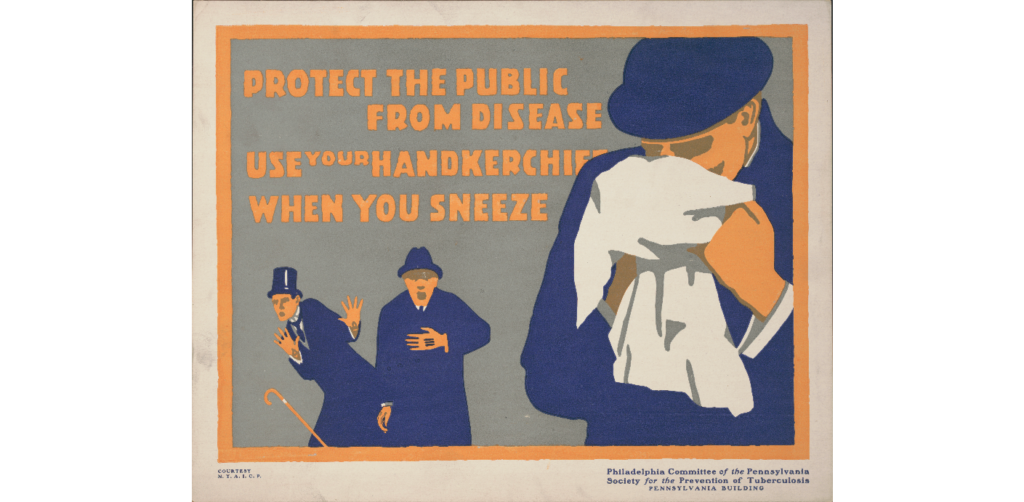Myrtle Naylor was born March 18, 1893, in Delaware. On February 10, 1912, she married Pierson Briggs Stevens (born July 8, 1889, in Odessa, Delaware) in Townsend, Delaware. On September 29, 1918, both Myrtle and Pierson died in Philadelphia, and were buried in St Paul’s Cemetery in Odessa on October 2nd. She was 25, he was 29.
This short paragraph sums up a surprising lot of information I waded through to come to an understanding of the end of cousin Myrtle’s short life.
The first things I found were census records for her parents, Charles and Flora, because I had Flora’s name from a document one of my great-uncles shared with me, and her husband’s from a marriage record. The censuses provided me with Myrtle and her 6 siblings, and then the Delaware Birth Records provided their birth dates. Her marriage record was also readily at hand.
… and then they died on the same day.
Well, all right, I had already hit the cousins who had all been wiped out, along with their farmhand, by a train colliding with their car. Common disasters happen, unfortunately. So now to look at the death certificates, if I could find them.
Luck was with me: they’d died in Philadelphia after 1906 — Ancestry had them.
I opened up Myrtle’s certificate first.
Date of death: September 29, 1918. Time of death: 12:30 PM. Cause of death: lobar pneumonia. Duration 4 days. Contributory: influenza. She died at home, at 104 Jackson St, Philadelphia, and was buried on October 2, 1918, in St. Paul’s Cemetery in Odessa, Delaware. The information about her parents, etc, were provided by Alfred R Stevens of Collingswood, NJ, who was most likely her father-in-law. She’d been attended by her doctor from September 21st until her death on the 29th, so she’d had flu for 8 days, pneumonia for the last 4 days.
Then I cracked open Pierson’s certificate. Different pen (blue instead of black), different handwriting. He was located at St Agnes’ Hospital, not his home address. This is where I found he was a Delaware River pilot, and yes, there’s Alfred R Stevens of Collingswood again — his father. Pierson had been attended by the doctor since September 26th until his death on the 29th, but that meant he’d been hospitalized for 3 days — we don’t know how long he’d been sick. Time of death: 7 AM. So poor Myrtle had been a widow when she died at 12:30 PM — no way of knowing whether she’d known or not. Pierson’s cause of death is listed as lobar pneumonia with a duration of 4 days. This doctor did not supply a contributory disease, but we can guess that Pierson also had influenza. A different pen and handwriting (likely the same undertaker, J L Wildey of 103 E Lehigh Ave) supplies that he too was buried on October 2nd in St Paul’s Cemetery, Odessa.
And here is a key point about death certificates: the doctor generally lists the precise cause of death. If we’re lucky, the doctor supplies a contributory disorder, as in the case of Myrtle. If not, we’re left to guess. In this case, we could probably guess fairly accurately, given that Philadelphia was one of the hardest-hit cities in the US by the 1918 influenza epidemic.

Looking at a chronology of the epidemic in Philadelphia provided by the University of Pennsylvania, we can easily see the probable line of infection: on September 7, 1918, 300 sailors from Boston arrived at the Philadelphia Navy Yard, and by September 11, 19 sailors were reported ill. By the 15th, 600 sailors and marines reported ill at the Navy Hospital. On the 19th, 2 sailors died of the flu, and on the 20th, 15 more died, as well as 1 civilian. On the 21st, 24 more were killed by the flu, including a nurse at Pennsylvania Hospital. We know that by the 21st, Myrtle had well and truly contracted the illness, enough that the doctor was called.
Pierson, our Delaware River pilot, may have run afoul of infected sailors in the course of his work and brought it home. Or, well, 104 Jackson St was about 7 blocks from the docks on the Delaware; Myrtle could have run into someone’s sneeze while out marketing for all we know. Either way, the couple was a pair of early, tragic casualties in what became far far worse, just a day before they died, when the obtuse douchecanoe in charge of the city’s Department of Public Health and Charities let the Liberty Bond Parade go on, with an attendance of several hundred thousand people.
By the end of the epidemic, about 12,000 of the ~1.8 million people in Philadelphia had died of influenza.
This is a glimpse into the process I use for ferreting out information when I’m working on genealogies, and why I finally started writing books about these people’s lives in order to capture as much as I could about the minutiae available in the records. Maybe I’ll do a more complicated one next — perhaps the family who died in the train-versus-car wreck, because that was a fascinating and very satisfying bit of detective work.
